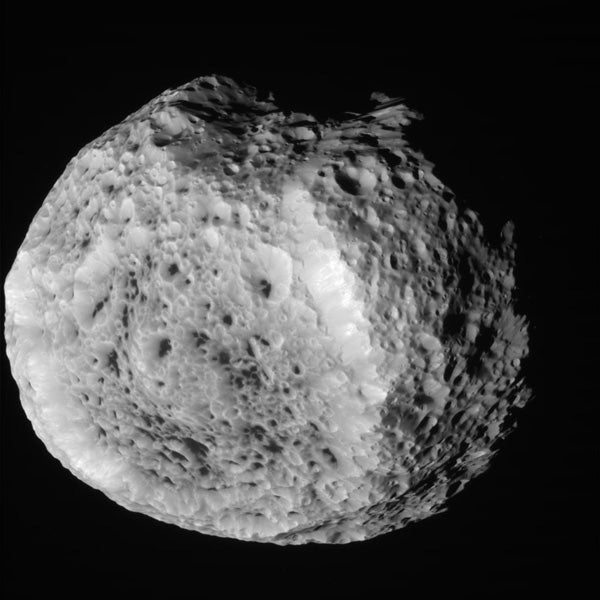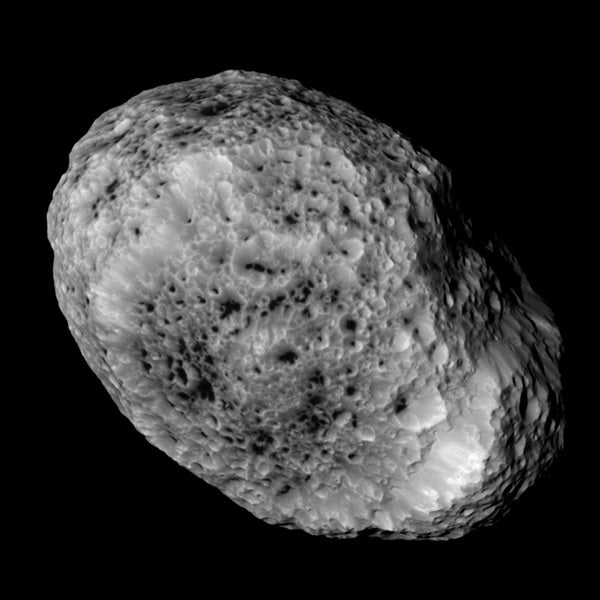NASA’s Cassini spacecraft has returned images from its final close approach to Saturn’s oddball moon Hyperion, upholding the moon’s reputation as one of the most bizarre objects in the solar system. The views show Hyperion’s deeply impact-scarred surface with many craters displaying dark material on their floors.
During this flyby, Cassini passed Hyperion at a distance of about 21,000 miles (34,000 kilometers) at closest approach. Cassini’s closest-ever Hyperion flyby took place on September 26, 2005, at a distance of 314 miles (505km).
Hyperion is the largest of Saturn’s irregular, or potato-shaped, moons and may be the remnant of a violent collision that shattered a larger object into pieces. Cassini scientists attribute Hyperion’s peculiar sponge-like appearance to the fact that it has an unusually low density for such a large object — about half that of water. Its low density indicates Hyperion is quite porous with weak surface gravity. These characteristics mean impactors tend to compress the surface rather than excavating it, and most material that is blown off the surface never returns.
Cassini will make several more close flybys of Saturn’s moons this year before departing the planet’s equatorial plane to begin a yearlong setup of the mission’s daring final act. For its grand finale set for 2017, Cassini will repeatedly dive through the space between Saturn and its rings.











